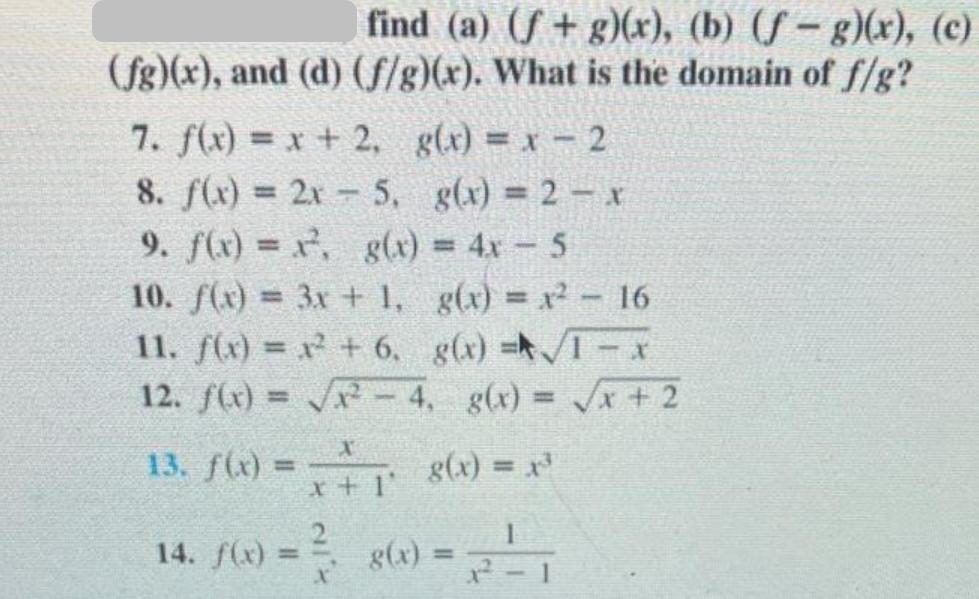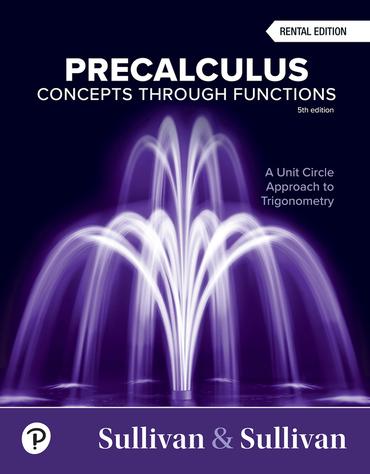Question
find (a) (f+g)(x), (b) (f-g)(x), (c) (fg)(x), and (d) (f/g)(x). What is the domain of f/g? 7. f(x) = x + 2, g(x) =

find (a) (f+g)(x), (b) (f-g)(x), (c) (fg)(x), and (d) (f/g)(x). What is the domain of f/g? 7. f(x) = x + 2, g(x) = x - 2 8. f(x) = 2x - 5, g(x) = 2x 9. f(x) = x, g(x) = 4x - 5 10. f(x) = 3x + 1, g(x)=x-16 11. f(x) = x + 6 g(x)=1-x 12. f(x) = x 4 g(x) = x + 2 13. f(x) = - g(x) = x x+1' 14. f(x) = g(x) =
Step by Step Solution
There are 3 Steps involved in it
Step: 1

Get Instant Access to Expert-Tailored Solutions
See step-by-step solutions with expert insights and AI powered tools for academic success
Step: 2

Step: 3

Ace Your Homework with AI
Get the answers you need in no time with our AI-driven, step-by-step assistance
Get StartedRecommended Textbook for
Precalculus Concepts Through Functions A Unit Circle Approach To Trigonometry
Authors: Michael Sullivan
5th Edition
0137945139, 9780137945139
Students also viewed these Mathematics questions
Question
Answered: 1 week ago
Question
Answered: 1 week ago
Question
Answered: 1 week ago
Question
Answered: 1 week ago
Question
Answered: 1 week ago
Question
Answered: 1 week ago
Question
Answered: 1 week ago
Question
Answered: 1 week ago
Question
Answered: 1 week ago
Question
Answered: 1 week ago
Question
Answered: 1 week ago
Question
Answered: 1 week ago
Question
Answered: 1 week ago
Question
Answered: 1 week ago
Question
Answered: 1 week ago
Question
Answered: 1 week ago
Question
Answered: 1 week ago
Question
Answered: 1 week ago
Question
Answered: 1 week ago
Question
Answered: 1 week ago
Question
Answered: 1 week ago
Question
Answered: 1 week ago
Question
Answered: 1 week ago
View Answer in SolutionInn App



